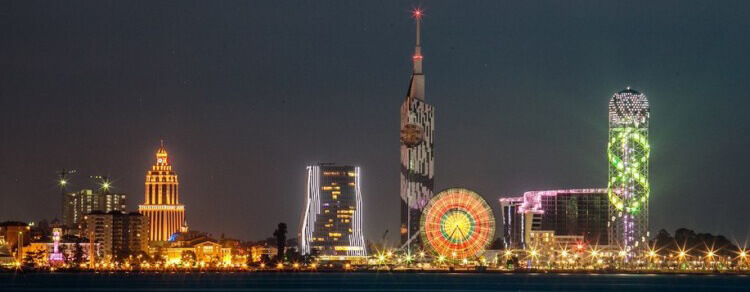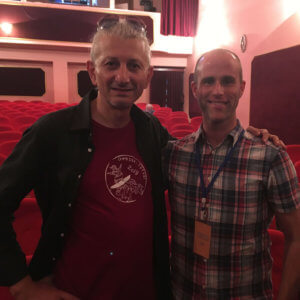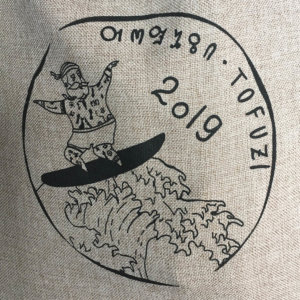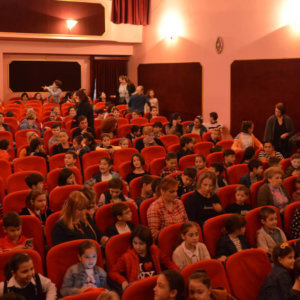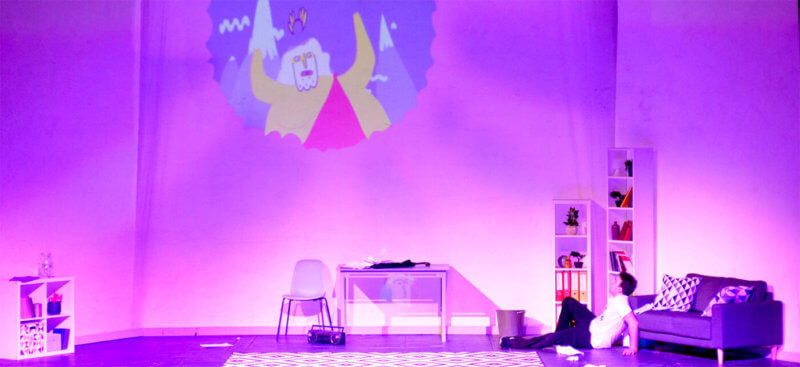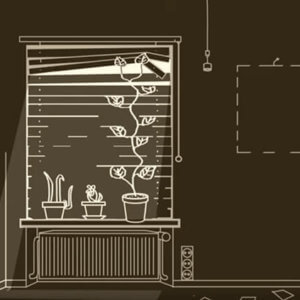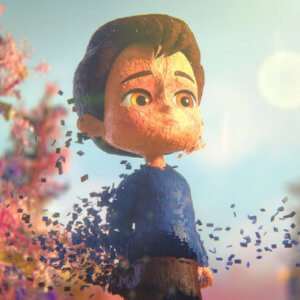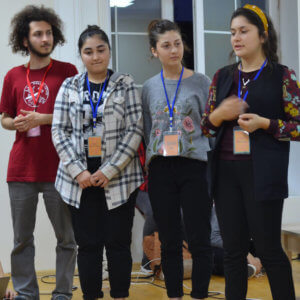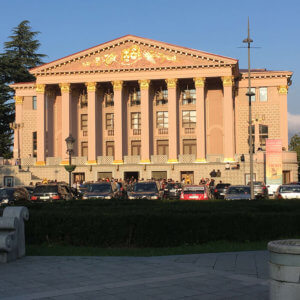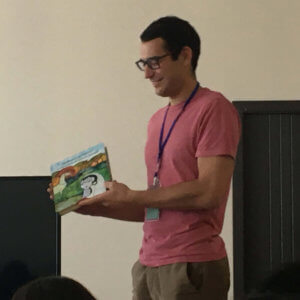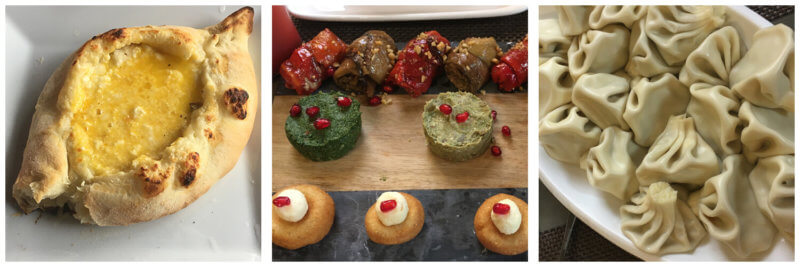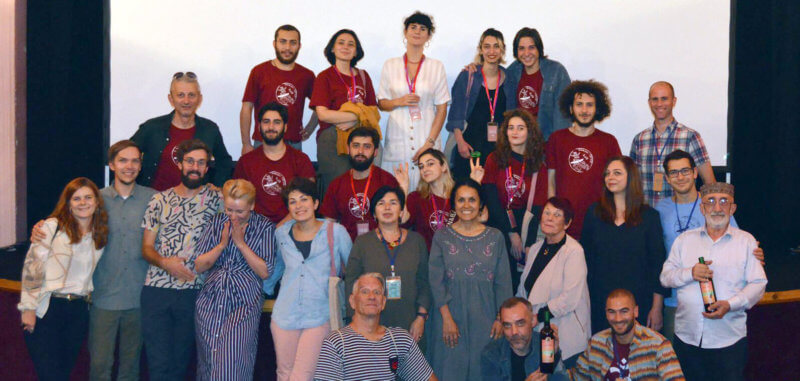Tofuzi Festival: A Taste of Georgia & Why You Should Visit
The Tofuzi Animation Festival, now in its 11th year, wrapped up last month in Batumi, Georgia. Although I had been aware of the festival since 2011, I had not had the opportunity to visit until now. I must also admit that my knowledge and understanding of the Georgian animation landscape was quite limited prior to my visit, but since meeting the festival team, the students and experiencing Tofuzi, this has now been remedied.
This article is partly a review of the 2019 festival, but also aims to highlight the importance of festivals in countries with small, but growing, animation industries. Additionally, I hope it serves as a gentle suggestion for anyone keen to visit a unique festival (and city) that they won’t regret…
What is Tofuzi Festival?
The festival was the brainchild of Zurab Diasamidze, who saw that Georgian animation was being neglected in relation to feature film and documentary film funding. In 2008 Zurab offered to run an animation festival, to highlight the situation of animation in Georgia. In that first year, the Georgian Animation category could not take place, as there was not a single film entered in competition. This persuaded the Georgian National Film Centre that animation did indeed need support, and they started to fund animation projects in 2009.
As Zurab was born and raised in Batumi – and wanting to contribute to the development of the cultural life of the city – he decided this would be the perfect place to establish the new festival: Tofuzi. But what is ‘Tofuzi’, I hear you ask? Zurab explains:
I asked my animators to draw a man dancing in the Adjarian national costume. The next day the drawing was ready, but I was surprised when I saw a fat man dressed in Adjarian clothes. The character’s obesity surprised me, and I said “Why did you draw me Tofuzi?” I was asked, “What does Tofuzi mean”? I remember in childhood: my father came home from a concert of the National Dance Ensemble and said, “Tofuzi was a Georgian national dancer who was 120kg and he was dancing on his feet”. Tofuzi was also a nickname for the overweight children in Adjara. Everyone liked the story and we left it as the name of the festival.
Due to the lack of Georgian animated films being produced, the objectives of the festival became 1) to popularize animated film among adults and children, and 2) to encourage the exchange of creative experiences between Georgian and international artists; with the overall goal of putting Georgian animation back on the global animation map. Essentially, to kick start a modern-day Georgian animation industry. But where does one start with such a task?
- Festival Director, Zurab Diasamidze
- Tofuzi ‘man’ in 2019 logo
- Young audience at ‘Films for Children’ screening
The festival consists of two parts, which seek to introduce animation as an attractive sort of culture to the children (and adults):
- The International Festival of Animated Films “TOFUZI” in Batumi – the event that this article is about – a 5-day festival of screenings, workshops, talks, pitching and networking.
- The Regional Festival “TOFUZI” which is held over the year in 20 regions of Georgia; regions where any cultural events are very rare.
With this focus on students and the younger generation, Tofuzi has a clear remit going forward. Through the festival and its foundation, there are now 7 new animation schools operating with 100+ children studying animation.
So what can visitors to the festival expect?
The 2019 Edition
The festival takes place over five days, at a selection of local venues (puppet theatre, university campus, drama theatre, library) hosting a range of screenings, talks, workshops and pitching sessions. Aside from the jury members and international guests, the target audience for these events are the Georgian children, students and young filmmakers – those who will take the ‘animation baton’ going forward. On occasions, I was the only adult in the cinema (minus the teacher), which was a great experience – children really are the most honest critics you can get. There were films that made them restless and chatty, films that made them laugh, and films that had them glued to the screen throughout.
One of the feelings I had from day one, was that Tofuzi was the kind of festival where you arrive knowing no one, but you leave with a new family. This is one of the things I love the most about smaller festivals – the intimacy, sense of community and new relationships that are forged after just a few days. Jury members, filmmakers, students (and journalists!) mixed together; talking animation, Georgian history, and sampling the local wines.
The opening ceremony took place in the rather grand Batumi Drama Theatre, where the festival was officially opened by a marching band of volunteers who unexpectedly burst through the theatre doors, down the aisles and onto the stage. After the usual ‘welcomes’ and ‘thanks’ were made, the stage was cleared and the lights went down. Next up was a 90-minute multimedia, experimental performance: Odyssey. Based on Greek mythology and adapted for children, the performance centred on two main characters – a father exhausted of everyday care and a projection-mapped, animated hero.
Moving onto the competition film screenings, Tofuzi has the standard categories that most festivals have – experimental, TV series, student film, debut film – while also celebrating films specifically for adults, children and by Georgian animators. There were some great films in competition; although it was a shame that not all of these could be shown on the large screens they deserved.
Three of my favourite films that I recommend you look out for, included:
- After (Matous Valchar)
- Master of Light (Stefan Vogt)
- Ian A Moving Story (Abel Goldfarb)
- After by Matous Valchar. A student film that looks at what comes after death. A humorous short that explores the way each religion believe their truth is the correct one. Unfortunately, only this non-subtitled version appears to be online at the moment, so look out for it on the festival circuit
- Master of Light by Stefan Vogt. Some of the most memorable films are the shortest, as this one from the ‘Films for Children’ selection proves. A simple, yet well executed idea – at only 1:40 minutes, give it a watch below.
- Ian, A Moving Story by Abel Goldfarb. Another film from the ‘Films for Children’ selection, and a perfect example of a film that had the young audience glued to the screens. The film follows a boy born with cerebral palsy who is desperate to make friends, but discrimination and bullying keep him from the playground. A touching film, that used CG effectively to tell the story. (Watch the full film here.)
A one-off event that took place towards the end of the festival was ‘Talk Show’ – an informal Q&A session where 2 of the filmmakers screened their films and took questions from the audience. The room was populated, once again, by enthusiastic and passionate young filmmakers, eager soak up as much information and advice as they could from the international guests. The two projects being discussed were Reviver (Renen Adar & Shalev Ben Elya), and Dog’s Story (Arkhip Varfolomeev).
Another opportunity that is afforded to the students, is to pitch their animated projects to the room of guests; including jury members, professionals and their piers. A daunting prospect for filmmakers of any age, the Georgian students took it in their stride, with some even pitching in their second language of English. In what was a very supportive environment, individuals and groups presented their ideas, designs, and animatics – in what was likely their first time pitching to an audience like this. The event resulted in some great interaction and feedback between filmmakers and audience.
- Students pitching their animation project
- Batumi Drama Theatre, Opening Night Venue
- Rashid Aghamaliyev, celebrating 50 years of Azerbaijan animation
To reference an earlier sentence of this article – Tofuzi’s aim being the “exchange of creative experiences between Georgian and international artists” – there were three screenings which exemplified this perfectly:
- Ukrainian showcase – Anastasiya Verlinskaya, the Program Director at Linoleum International Animation Festival, brought a selection of nine Ukrainian produced shorts, which included such gems as: The End (Nikita Liskov), Dreams (Andrey Naumenko), and The Shop of SongBirds (Anatoliy Lavrenishyn).
- Romanian showcase – Ligia Soare, the co-founder of Anim’est, brought a selection of 13 shorts, for all ages: a couple of my personal favorites were the Plympton-esque Christmas of 95 (Vlad Acatincăi), and stop-motion car-chase Skateboarding is Not a Crime (Cristian Radu).
- Azerbaijan showcase – To celebrate 50 years of Azerbaijan animation, Rashid Aghamaliyev, the director of Animafilm – Baku International Animation Festival, put together a touring programme of their most famous animated films, ranging from 1969 to 2017. Accompanied by Azerbaijan legend Elchin Akhundov, who was happy taking questions from the students, Rashid also presented his recent book, Azerbaijani Animation (although unfortunately not available in English yet).
After five days of forging new friendships, seeing some amazing animation, and drinking far too much wine, Tofuzi 2019 closed for another year with the awards ceremony, and the promise that it would return bigger and better in 2020.

Main Jury (left): Ligia Soare, Lilia Nemchenko, Olena Golubeva, Nancy Denney-Phelps, Rashid Aghamaliyev
Young Jury (right): Adolfo Di Molfetta, Natia Nikolashvili, Sander Joon, Jasper Kuipers, Anastasiya Verlinskaya
The host city: Batumi, Georgia
A festival is more than just an organised week of screenings and events; the host city is just as important to the success and memory that people take home. What would Annecy be without the lake, mountains and Tartiflette? Tofuzi is no different. Sitting on the eastern edge of the Black Sea, Batumi is the third largest city in Georgia – not to mention a cultural centre – hosting numerous international festivals; of which Tofuzi is one.
The city – a historical sea port – hosts the festival during October, which is the perfect month as the weather is still warm (23 degrees on my visit), plus the tourists have mainly gone home.
If you can make it out between screenings, as I was fortunate to, Batumi is a fascinating city to simply explore on foot; from its mix of modern and ancient architecture, to the public sculptures & artworks on display at every turn. There were a few ‘tourist sights’ I was advised not to miss, which included: the Alphabetic Tower (a viewing tower that displays the 33 letters of the Georgian alphabet from the bottom); the Chacha Tower (a tower with fountains that spout ‘Chacha’ – a strong Georgian alcohol – each day at 7pm, for 10 minutes); Ali and Nino statue (created by Georgian sculptor Tamara Kvesitadze, a metallic statue of a man and women who, every 10-minutes or so, move towards each other, appear to kiss, and then pass through each other’s body, before separating); and the Dancing Fountains (a long fountain where, once the sun goes down, lights and water jets are synchronized to pop, rock and classical music. Watch them from afar, or if you’re feeling brave, attempt to cross the bridge mid-music…)
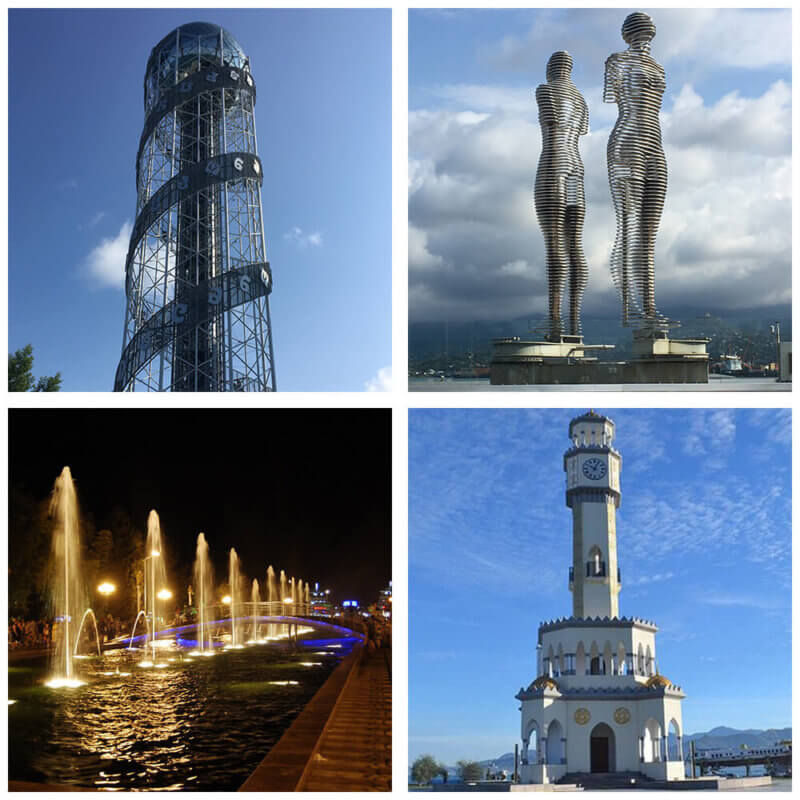
Batumi sights (clockwise from top): Alphabetic Tower, Ali and Nino statue, Dancing Fountains, Chacha Tower
And if you don’t manage to explore the city during the day, Batumi is beautiful come nightfall. You can still do all the above, but you will see the city in a different light… literally. Every building, monument, sculpture, and park appears to be illuminated in some creative way, inviting you to stay out later than you know you should.
Like every festival, when you have been watching animation for 6+ hours, you’re going to need to replenish your reserves with some food and drink (alcohol anyone?). Georgians pride themselves on their national dishes and locally produced wines. There are so many traditional Georgian restaurants and shops; it is actually difficult to find any ‘Western’ or international food places; which was refreshing. Thanks to our kind hosts, I have now tried some of the more popular Georgian dishes, which I can share with you here: Adjaruli Khachapuri (a boat-shaped bread with cheese, butter and egg yolk in the middle); Eggplant rolls (eggplant/aubergines with a walnut paste inside. In fact, walnut is a very popular ingredient in a lot of Georgian dishes); and Khinkali (a Georgian dumpling filled with a minced meat & juices; typically consumed first by sucking the juices while taking the first bite). Plus, both the red and white wine comes highly recommended!
Interested in attending? An idea of costs…
Transport: If you don’t live in Georgia, flying is going to be the obvious option. Batumi has its own small airport – only 2km away from the city centre. Alternatively, you can fly into the Georgian capital, Tbilisi – however, this will entail an additional 6+ hour bus journey to reach Batumi. It depends where you travel from, but most flights will require a transfer at Istanbul Airport, with Turkish Airlines one of the obvious airline choices. Based on a return flight to London, expect prices around the £400 mark.
Accommodation: The last decade has seen increased investment in Batumi, which means there are plenty of hotels to take your pick from. You can expect to pay anything from £45/$60 per night. If Airbnb is more your thing, you will be able to find some fantastic apartments between £15-40/$20-50 per night.
At the time of writing, 1 GEL (Georgian Lari) was equal to approx. £0.25p/$0.75. To put this into perspective, regarding food and drink, you can expect to buy a large glass of wine for around £2.00/$2.50, and a nice meal for around £8/$10.
Summary
The Festival grows and develops every year, which is encouraged by the interest and involvement of the younger generation. When asked what his hopes are for the future of the festival – and of Georgian animation – Zurab replied:
Our main resources are these children and the next generation, and I am happy to see professionals grow in this field and this is truly the merit of Tofuzi. My expectations are also related to the increase and training of human resources; in order to be able to enter the broad market and to co-operate with representatives of different countries in this field. I think animation is on the right path in Georgia, and hopefully there will be more and more support in different directions, which will allow us to grow the scope of the festival as well as employ more young people in this field.
Although dates have not been confirmed yet, Tofuzi will be back again in October 2020. Submission dates will be announced from January 2020, so if you have an animated short film suitable for one of the above categories, keep an eye out and don’t forget to submit next year – you could find yourself in beautiful Batumi. You can follow festival news on either their website, FilmFreeway or Facebook page.
A big thank you to Festival Director, Zurab Diasamidze, for inviting Skwigly, and to Ani Gejadze, Mariska Diasamidze & the team for looking after us, plus to the Georgian National Tourism Administration for their help with transport and accommodation.


